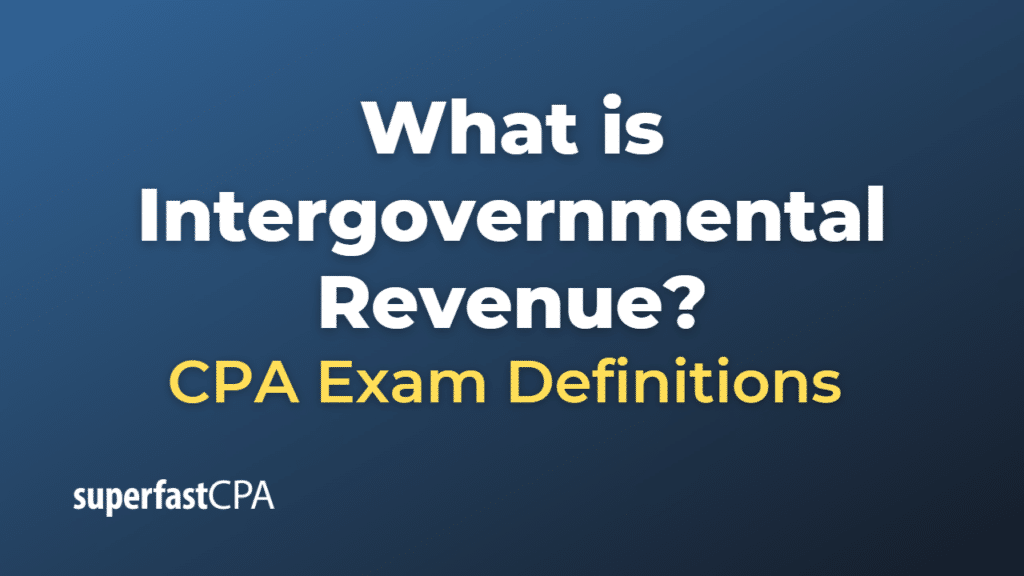Intergovernmental Revenue
Intergovernmental revenue is the funds transferred from one level of government to another. These transfers may be in the form of grants, shared taxes, or allocations made to support specific projects, programs, or activities.
For example, the federal government may provide funds to state governments, which can further provide funds to local governments. These transfers are intended to support the provision of public goods and services that benefit the community at large.
Intergovernmental revenue can be used for a wide variety of purposes, such as education, transportation, infrastructure, public safety, health and human services, and environmental conservation among others.
These revenues are a significant part of the budgets of many states and localities and are usually recorded and reported in their respective financial statements.
Example of Intergovernmental Revenue
Suppose the federal government in the United States allocates funds for improving education across the country. It disperses these funds to individual state governments based on various criteria, such as the number of students, the need for resources, etc. This is a form of intergovernmental revenue for the state governments.
Now, a particular state, let’s say California, receives a portion of these federal funds. The state government, in turn, distributes these funds to its county and city governments based on their specific needs and circumstances. Again, this distribution represents intergovernmental revenue for the county and city governments.
So, for instance, Los Angeles (a city in California) might receive funds from the California state government, which it uses to improve its local school system. This could include hiring more teachers, purchasing new textbooks, upgrading facilities, implementing new educational programs, etc.
The receipt of these funds would be recorded as intergovernmental revenue in the financial statements of the state of California and the city of Los Angeles, respectively. These funds are used to supplement the states’ and cities’ own revenues (like taxes) to provide services to their communities.













